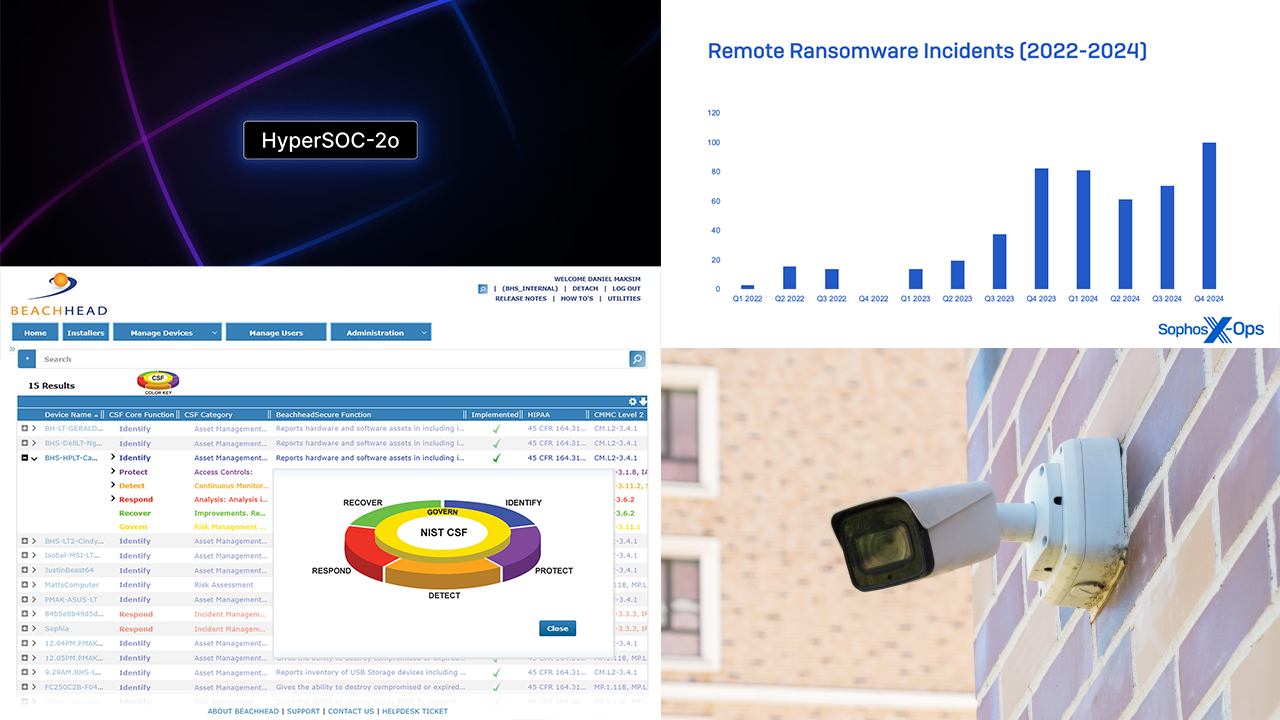LAST JANUARY, forecasting the year ahead in IT seemed like a fool’s errand. With a pandemic still raging, vaccines just arriving, and deep economic uncertainty persisting, all anyone could say for sure about 2021 was that it was bound to be better than 2020.
Twelve months later things are different. COVID-19 remains an issue and no one knows quite when inflation and supply chain bottlenecks will ease, but the future looks significantly more predictable than it did the last time ChannelPro gazed into its tech industry crystal ball.
In fact, the future looks so predictable these days that in fields ranging from cloud computing and security to storage and PCs, our go-to panel of industry experts advised us to expect a lot of what you might predict yourself, with a few new wrinkles mixed in.
Managed Services
Despite—or perhaps because—of the pandemic, 2020 and 2021 were good years for managed services. Gary Pica, president of MSP advisory firm TruMethods, believes 2022 will be even better.
“We’re at a point now where almost anyone with less than 250 employees is going to outsource some or all of their services, because they have so much more technology,” he says. “There’s no going back at this point in the digital revolution.”
That bounty isn’t flowing equally to everyone, however. MSPs with fine-tuned business processes and proven competitive strategies in the sector’s top 25%, Pica reports, are outperforming peers in the bottom 50% by a wider margin than ever before.
“They’re adding a bunch of recurring revenue. They’ve matured their security posture. They’re getting $160 to $250 a seat,” he says, adding that less advanced peers will have a hard time keeping up this year.
“I’m not suggesting that those small or less mature MSPs are going to go away,” Pica says, “but they’re going to have to decide more specifically, what is my niche?”
This is especially true because 2022 will be a year of continued M&A activity funded in part by the $2.3 trillion worth of uninvested capital currently held by private equity investors, according to S&P Global Market Intelligence. “Being run by businesspeople, they have dedicated sales and marketing focus,” Pica notes of PE firms, which means the big MSPs they’re building will be directly targeting customers of smaller MSPs this year.
In case that’s not pressure enough, MSPs of every size will continue to face tight hiring conditions in 2022, according to Pica. Finding good people was difficult before the pandemic, he notes, but in the work-from-home era technicians can potentially sign on with any MSP anywhere.
“Now you’ve got to compete with the whole world basically, and definitely the whole country,” Pica says.
Cloud Computing
On the other hand, at least you don’t have to compete with Amazon and Microsoft. Google does, which is why Forrester believes the company will fall short of a milestone it once said it would achieve by 2022.
“They expected to be either first or second in the cloud services provider world, and we don’t think they’re going to make it,” says Lee Sustar, a principal analyst at Forrester. The industry heavyweight is adding plenty of users, he observes, but isn’t gaining significant share thanks to multicloud procurement strategies—leading companies that buy from Google to buy from AWS and Microsoft as well.
That’s OK, though. There will be more than enough spending to go around, according to Gartner, which sees outlays on cloud services rising close to 22% this year to more than $482 billion worldwide. That’s down from the 27% growth recorded in 2021 but still four times the 5.5% uptick that Gartner projects for IT revenue overall this year.
Forrester expects a growing portion of that cloud spending to flow into industry-specific solutions like the Microsoft Cloud for Healthcare and IBM Cloud for Financial Services. “In a heavily regulated industry where a lot of compliance issues come to the fore, the ability to get a set of cloud services with those considerations already in mind can be very beneficial,” Sustar notes.
Security
Anticipating what 2022 holds for the security market may be even easier than forecasting the year ahead in cloud.
“I think it will be an active year,” says Jon Oltsik, senior principal analyst at Enterprise Strategy Group, dryly. “I see no letup in the threat landscape.”

Jon Oltsik
That applies to more than just ransomware too, he adds. “I think we’ll see at least one more, or probably several more, software supply chain type of attacks,” like the kind that struck SolarWinds a year ago.
The challenges of securing a hybrid workforce in which employees split time between home and office will make matters even worse. “We’ve already seen increases in the amount of attacks,” Oltsik says, adding that a lot of the ensuing breaches result from negligence among remote workers who can be difficult to monitor. Indeed, 84% of organizations surveyed by security vendor Egress last summer had experienced at least one incident caused by human error in the prior 12 months.
On the plus side, Oltsik sees 2022 as the year that channel pros move past desperately patching work-from-home holes. “I think we’ll go from a defensive posture to a more offensive posture,” he says, in which the goal is to build a hybrid security foundation scalable and manageable enough to endure the next five years.
“It gives creative and aggressive channel partners a great opportunity,” he observes.
Vendors
So, according to Dell at least, does APEX, the as-a-service cloud infrastructure platform the company officially launched last May. “I think you’re going to see them push very hard on that,” says Bob O’Donnell, president and chief analyst at TECHnalysis Research. “They see the channel as, obviously, an important mechanism for them to get these as-a-service offerings out there.”
Microsoft, for its part, will have more than just Azure and Microsoft 365 going for it in the cloud this year, O’Donnell predicts. Though it may not be a breakout hit, Windows 365, the “cloud PC” platform that Microsoft rolled out in 2021, will soon begin transitioning from test deployments to full-scale production.
“It’s not for everybody, but there are certain applications, certain environments, where it makes a ton of sense,” says O’Donnell, citing call centers and temporary workers as examples.
With employees spending more time in the office but still collaborating with people at home, cloud-connected meeting room devices like Microsoft’s Surface Hub should have a strong year too. To realize their promise, O’Donnell notes, digital whiteboards must be capable of running the multiple videoconferencing solutions that most businesses use.
“Nobody in their right mind would want to buy something that limits them to a single platform,” O’Donnell says, “and yet you’ve still got some of these vendors, Microsoft and Zoom in particular, trying to push a single-platform hardware solution for a conference room.” Cisco, by contrast, announced plans to add cross-platform compatibility to its Webex hardware last October, and O’Donnell expects that move to yield dividends for the Silicon Valley giant this year.
Hardware
Hardware makers reaped even greater dividends in 2021 from continued demand for office and work-from-home PCs. Global endpoint spending (excluding data center gear) was on track to rise 15.1% to nearly $802 billion last year, in fact, according to recent projections from Gartner.
Credit a small part of that sum to Roger Kay, president of analyst firm Endpoint Technologies Associates. He bought a sleek and speedy new notebook late last year. When he’s in his home office, he connects it to his 43-inch monitor, mouse, and external keyboard. When he’s on the road, he stashes it in his computer bag.
“That, I think, is sort of the ideal rig you want,” Kay says. “Big, comfortable, high-performance, and not too expensive when you’re in your own environment, and then you want some ability to go to other places.”
It’s a perfect formula, in fact, for hybrid workers who want to use one current-generation PC both at home and in the office, which is why laptop sales should remain strong well into 2022, Kay adds. In fact, non-data-center endpoint shipments will climb 2.3% this year, according to Gartner. That’s a significant slowdown from last year but a welcome change from the streak of annual sales declines that preceded the pandemic.
Unless, of course, continued chip shortages mar that upbeat picture. “The chip supply is going to be a bit unpredictable,” says Kay, who sees something akin to normalcy returning sometime this spring or summer.
Assuming chips are available, Kay expects a crop of faster, more power-efficient Windows PCs, inspired in part by the impressive combination of speed and battery life in laptops bearing Apple‘s M1 processor, to start showing up this year, along with videoconference-optimized desktop monitors that are even “bigger and denser and brighter and more beautiful” than predecessors from 2021.
The only downside to the endpoint picture, in fact, is that once the current purchasing wave is over it could be a while before another one forms, thanks to lengthening replacement cycles. “It was three to five [years] and it could go out to five to seven for most people because their devices still work,” Kay says.
Digital Signage
There’s plenty of hardware involved in digital signage, of course, which means the same product shortages impacting the PC and peripheral markets are impacting purchases of displays and media players as well.
“In conversations with the big distributors and several of the large integrators around the country, they’re having to adjust their businesses to the flow of goods coming and the availability,” says Alan Brawn, principal of advisory firm Brawn Consulting. “The economic momentum, aka demand, is there and growing but the supply will take some time to catch up.”
When it does, he continues, look for pent-up demand to drive brisk sales momentum—or rather, brisker.
“There was still growth of 6% to 8% in 2020 and into the first half of 2021,” Brawn says, stemming from pandemic-related sales of health monitoring solutions, traffic control systems, and touchless displays. 2022’s even higher spending, he believes, will be spurred by organizations in education, healthcare, and other verticals buying into the digital signage value proposition the way retailers did long ago.
Bigger displays, including dvLED panels, will account for only some of that higher spending, according to Brawn. “It’s the behind the scenes—pun intended—things that will drive the opportunities,” he says, including analytics and artificial intelligence software that mines digital signage usage records for trends and market opportunities.
Storage/BDR
Signage solutions are but one contributor to what will be predictably strong demand for storage in 2022, according to Greg Schulz, founder and senior adviser at analyst firm and consultancy StorageIO. “More data continues to be generated,” he notes.
IDC, in fact, expects data creation and replication to grow at a 23% CAGR through 2025. As a result, the analyst predicts, the 6.7 zettabytes of storage capacity in use as of 2020, the last full year for which figures are currently available, will climb at a 19.2% CAGR over the same period. To put that number in context, each zettabyte is a billion terabytes.
Despite exploding use of cloud solutions, a lot of that data will reside on premises, and not just in corporate data centers. “We’re seeing more storage actually being deployed out at the edge,” Schulz says. Research from Gartner confirms that trend. While just 10% of business data was created and processed outside a traditional data center or cloud last year, the analyst says, 75% will be by 2025.
Much of that data will reside on good old-fashioned hard drives, according to Schulz. Though adoption of flash storage, which is faster than disks, continues to soar, HDDs remain a more affordable option for data that isn’t used heavily.
“They’re better together,” says Schulz of flash and disks.
They’re also equally vulnerable to attackers and corruption, which is why companies will take BDR even more seriously in 2022, according to Schulz. “It’s not just having more copies of your data,” he says. “It’s also having more versions of those copies as well as copies of those versions that are kept in different locations.”
It’s a harbinger too—and a predictable one at that—of fresh sales ahead for the SMB channel.
Image: iStock Photo


















